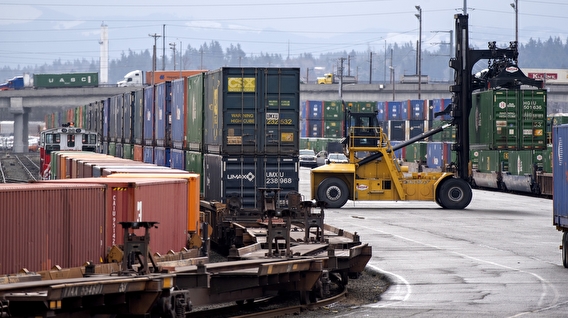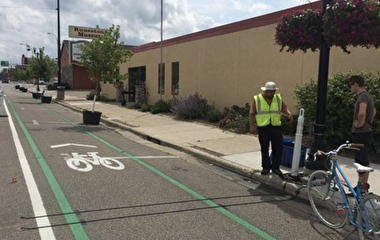
The goods that continuously move through Minnesota by road, rail, air, water, and pipelines drive the state’s economy, making efficient freight transit—and excellent freight infrastructure—a high priority for the Minnesota Department of Transportation (MnDOT).
“MnDOT needs commodity flow data to plan improvements, minimize supply chain disruptions, and ensure that our state’s infrastructure can accommodate cargo transport by all modes,” says Camila Fonseca-Sarmiento, director of fiscal research at the U’s Institute for Urban and Regional Infrastructure Finance (IURIF).
To address this need, IURIF researchers compiled detailed information on the advantages and limitations of existing freight data sources and created guidance for choosing the most helpful sources for planning, programming, and designing the state’s freight infrastructure.
The project included a review of existing freight data sources in the US, a survey of state freight data practices, interviews with Minnesota stakeholders involved in freight and planning, and nine in-depth state case studies to identify best practices for generating and collecting freight data.
Using this information, the researchers created a record of existing public and proprietary freight data sources and recommendations for determining the most helpful data sources for planning, programming, and designing future freight infrastructure. They also identified best practices for generating and collecting freight data. These include utilizing available data sources, identifying appropriate data collection methods, collaborating with other states to share freight information, and approaching the private sector to understand its freight-related challenges.
“This work was very helpful in understanding how other states manage freight data needs and moving MnDOT forward in developing the tools to optimize our freight transportation network,” says Andrew Andrusko, statewide planning director for MnDOT’s Office of Freight and Commercial Vehicle Operations and the project’s technical liaison.
The project’s key takeaways have been synthesized in a freight data infographic, now available for download.
The next step for MnDOT is using these findings to help create a tool for network freight optimization. The tool will use data and modeling to improve MnDOT’s capabilities for freight transportation planning—creating a more efficient multimodal network for moving goods around the state while lowering supply chain costs.
MnDOT sponsored the research. Fonseca-Sarmiento was the principal investigator of the research team, which included Raihana Zeerak, IURIF researcher; former graduate student Kimberly Napoline; and Jerry Zhao, IURIF founder and advisor.
Writers: Megan Tsai and Pam Snopl


